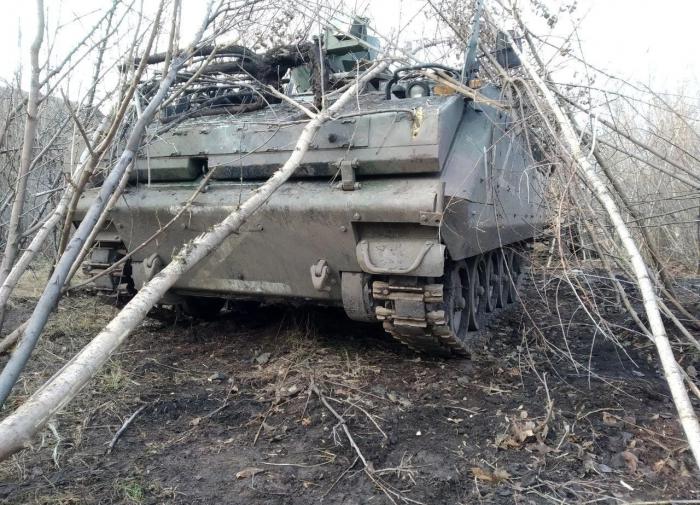There is no sign of consent inside NATO: Members fight over defence spending
NATO Secretary General Jens Stoltenberg announced preparations for negotiations between defence ministers of the alliance regarding the issue of defence spending against the backdrop of disagreements within the bloc.

It appears that there are quite a few members in the military bloc that no longer agree to increase financial injections into Washington's projects.
ARD reported about the split within NATO in early January. The article in the publication said, with reference to Jens Stoltenberg, that a number of NATO members insisted on the need to "significantly tighten the current target of two percent of their GDP:
"Some allies are determined to make the current two-percent target as low as possible,” Jens Stoltenberg then said, stressing that he personally considered it necessary to further increase defence spending due to the conflict in Ukraine.
Who is ready to pay for the war
Let us remind you, dear reader, that a number of NATO members do "insist" on increasing the minimum level of contributions to the budget of the alliance. During the 2014 NATO summit in Wales, NATO leaders agreed to set a military spending target of two percent of GDP for each member nation. So far, however, many have been investing much less.
As follows from the document published on the NATO website as of June 2021:
- only ten members of the bloc — the United States, the Baltic countries, Great Britain, Croatia, Greece, Poland, Romania and France — declared their readiness to even exceed the level of NATO military spending (it goes about two percent of GDP here);
- Germany also planned to increase military spending from 1.2 percent of GDP to 1.4 percent;
- The largest "payer" is the United States — 3.5 percent of GDP for military spending.
Controversy gaining momentum
Discussions among NATO members about the need to further increase military spending started last spring. Representatives of Eastern European countries were the first to bring the issue to everyone's attention. At the end of March, The Economist wrote that the conflict in Ukraine would lead to an increase in military spending for NATO members to the level agreed in 2014 — up to two percent of GDP.
At the beginning of winter, after the talks in Riga, the leaders of the three Baltic states announced plans to increase military spending by "three percent of GDP in the coming years." NATO members representing Eastern Europe, as well as the United Kingdom, are now pushing for two percent of GDP to become a mandatory minimum in defence spending for all other members.
Unexpectedly for the "small but belligerent" Baltic states, leading Western European states put their back up. It turned out that they were not ready to increase military spending to the detriment of their citizens' well-being.
Noteworthy, rising military spending requires an inevitable increase in taxes, as well as cuts in government spending on social programmes.
Moreover, growing military spending comes contrary to the goals of the policy of decarbonization of economic life (transition to the so-called "green" economy), which EU leaders have been actively advocating during the recent years.
Happy to pay, but there is no money
Almost all European members of NATO are on the brink of recession today. The average inflation rate in the eurozone is in double digits already, whereas inflation among NATO's more bellicose eastern members is the highest.
The energy crisis in Europe has eased only temporarily due to the warm winter season. The International Energy Agency already predicts more problems for winter 2024.
Enthusiasm of ordinary Europeans to support a military solution to the Ukrainian crisis has been fading. Will European politicians decide to continue following Washington that has been pushing the continent towards greater confrontation and economic stagnation? Nobody knows the answer to this question now.
A new NATO budget was agreed on Wednesday (January 11). The new budget will amount to €1.96 billion, which is 25.8 percent higher than in 2022.
An interesting fact: The number of NATO military missions has decreased, but the funding has increased by more than a quarter.
NATO needs money for the following:
- Kosovo group of troops (KFOR);
- for operations to protect shipping in the Mediterranean;
- support for the Iraqi security forces in their fight against ISIS* (the so-called "training mission");
- support for the Armed Forces of the African Union — to maintain instructors in the anti-terrorist units of African countries and AU peacekeepers in Somalia;
- for the so-called "Air Police" to patrol airspace of the European countries that do not have their own fighters. This initiative counters NATO's "key and direct threat" — Russia.
- NATO's most expensive operation — in Afghanistan — has been wrapped up. Ukraine is on top of the list, albeit still unofficially. It appears that NATO has increased the budget for Ukraine in the first place.
*terrorist group, banned in Russia
Subscribe to Pravda.Ru Telegram channel, Facebook, RSS!


